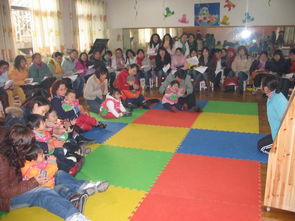早教英语启蒙儿歌
Early Childhood English Songs: The Power of Rhythm
Early childhood is a crucial time for language development, and incorporating English songs with rhythmic elements can greatly enhance the learning experience. Here’s why:
1. Engagement and Attention
Songs with catchy tunes and rhythmic patterns naturally capture children’s attention. They become more engaged in the learning process, making it easier for them to remember words and phrases.
2. Repetition and Reinforcement
Repetitive lyrics in songs help reinforce vocabulary and grammar structures. Children learn through repetition, and songs provide a fun and enjoyable way to repeat key language elements.
3. Auditory Discrimination
Listening to songs helps children develop auditory discrimination skills, distinguishing between different sounds, words, and intonations. This is crucial for language comprehension and pronunciation.
4. Motor Skills Development
Movement and gestures often accompany songs, promoting the development of fine and gross motor skills. Actions like clapping, stomping, or dancing to the rhythm enhance physical coordination and language association.
5. Emotional Connection
Music has a powerful impact on emotions. Songs with positive themes and melodies create a joyful learning environment, fostering a positive attitude towards language acquisition.
Recommended Early Childhood English Songs
1.
"Twinkle, Twinkle, Little Star"
Engages children with its simple melody and repetitive lyrics.
Encourages exploration of the night sky and celestial objects vocabulary.
2.
"The Wheels on the Bus"

Introduces transportation vocabulary through interactive and rhythmic verses.
Promotes motor skills through accompanying hand movements.
3.
"If You're Happy and You Know It"
Encourages emotional expression and body movement.
Reinforces the concept of actions and emotions with corresponding lyrics.
4.
"Head, Shoulders, Knees, and Toes"
Teaches body parts vocabulary in a fun and interactive way.
Enhances physical coordination through touching body parts while singing.
5.
"Old MacDonald Had a Farm"
Explores animal names and sounds, stimulating auditory discrimination.
Encourages creative thinking by imagining different farm animals.
Tips for Using Early Childhood English Songs Effectively
Consistency
: Incorporate songs into daily routines to create a familiar learning pattern.
Interaction
: Encourage children to participate actively by singing along and performing gestures.
Variety
: Explore different genres and styles of songs to cater to diverse learning preferences.
Contextualization
: Relate songs to reallife experiences or classroom themes for meaningful learning.
Positive Reinforcement
: Praise and celebrate children’s efforts in singing and learning new vocabulary.By integrating rhythmic and engaging English songs into early childhood education, educators and parents can nurture a love for language learning while enhancing overall cognitive and motor development.











